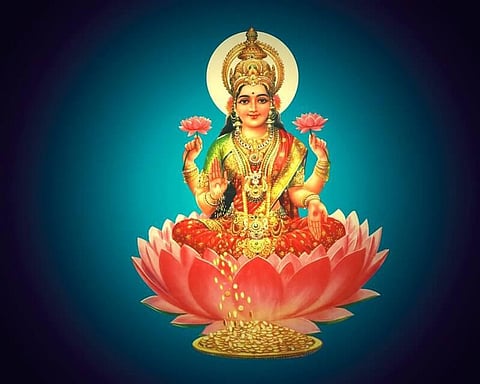
- Home
- न्यूजग्राम
- India
- World
- Politics
- Entertainment
- Culture
- Lifestyle
- Economy
- Sports
- Sp. Coverage
- Misc.
- NewsGram Exclusive
- Jobs / Internships

By Devakinanda Pasupuleti, MD
Ashtottaram 30) OṀ SARVADEVATĀRCHITABHŨMYAI NAMAH:
Ashtottaram 30: OṀ (AUM) –SAR-VA-DEVA-ṪAAR-CHI-TA-BHOO-MYAI—NA-MA-HA
ॐ सर्वदेवतार्चितभूम्यै नमः
(Sarva: All; Devaṫa: Deities; Archiṫa: Worship, ritual)
Follow NewsGram on Facebook to stay updated.
The only land on the planet which worships the female energy of God as a goddess is our Bhāratabhūmi. Siddhis like Sri Ramakrishna Paramahaṃsa literally worshipped his wife Śāradā Devi' as Shakti (goddess of energy). Our Vedic goddesses are the only female deities worshipped by every Hindu irrespective of age and gender, which you see nowhere else in any culture or religion. In some other religions worshipping female saints or goddesses is not only completely prohibited; if anybody does it, they will be punished severely. Some religions restrict leadership to males. The ordination of women has been a controversial issue in some religions because of cultural or theological prohibitions. Abraham's religions, Islam, Judaism, and Christianity, all have male dominance.
In our Hindu religion, Shri Lakshmi is worshipped as the goddess of fortune, wealth, and beauty; Shri Saraswati is the goddess of education and knowledge; and Shri Durga perhaps the most widely worshipped aspect of Śhakti', is the personification of the goddess of power and bravery. These three female goddesses (Sridevi) are actually the three major manifestations of the One Supreme Power Maheśvari according to the three guṇas (tamas, rajas, and sattva). Each goddess is worshipped with 108, or 1,000 sacred mantras (sacred formulae) praising their powers, beauty, and leelās (pastimes).
Goddess Durga. Pixabay
They are worshipped in every Hindu household with flowers, turmeric, and vermilion, especially by married and unmarried women. Every verse of Lalita Sahasra naamams (thousand names of Shri Lalita goddess) is considered to be a mantra of the goddess and its repetition is believed to confer whatever boons the votary prays for. Śhakti is worshipped as the Mother of the Universe, and she is the personification of tender love when supplicated. She is also the personification of Māyā, the mysterious power of Lord Vishṇu.
ALSO READ: Ashtottaram 29: OṀ STRĪGAURAVABHŨMYAI NAMAH
It is important to note that the various gods and goddesses of the Hindu pantheon, including Shakti, are various manifestations of the only God-Parabrahman. The omnipresence, omnipotence, and omniscient power of God are well understood by each and every Hindu and nobody finds it odd to see someone praying to trees or animals.
We see female goddesses as mangaḷa, means-auspicious. Various manifestations of these three goddesses are worshipped in temples throughout India, especially in south India. Festival days like Dēpāvaḷi, Dasahrā, and Navarātri are celebrated on a grand scale every year.
Our land which worships all the gods and goddesses is none other than 'Sarva devatārchita Bhūmi.
